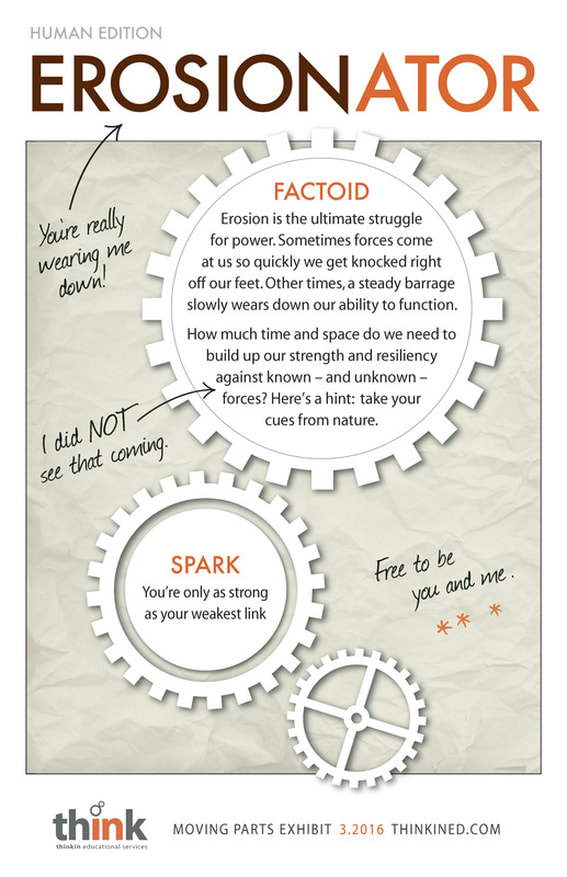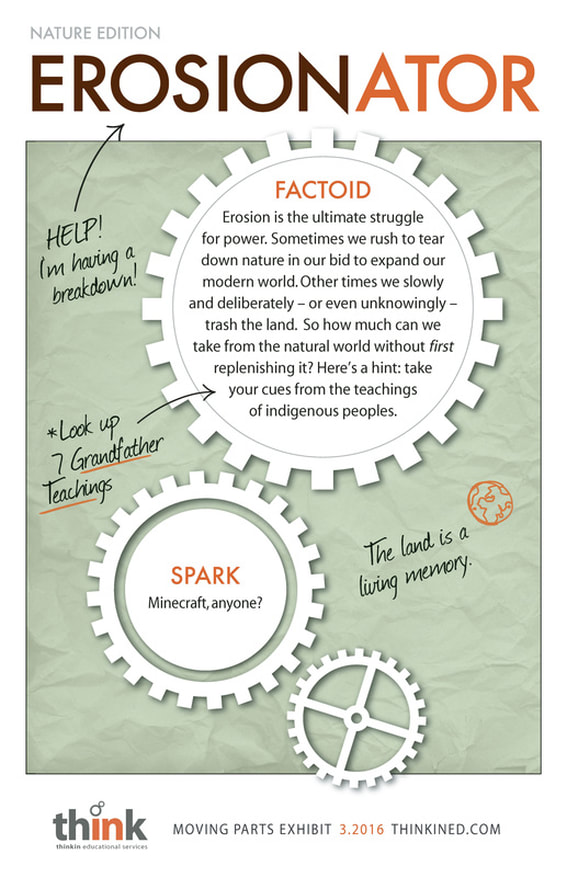Moving Parts
JEH MacDonald House | March 2016
We have been processing this exhibit for a while now – the learning curve from this particular concept was enormous! We built this exhibit to answer our questions about how things move and interact with each other – essentially how things relate. We recognized that within any system, there are moving parts that are essential to the whole, and understanding how they work would expand our knowledge of how to build healthy communities. We found many of our answers by deconstructing the science of simple machines. 💙
Friction
|
Every material in the world has friction; probably every relationship, too. We designed the Hall of Frictionology to expand our understanding of how much friction we need to keep things moving smoothly. At first, we witnessed mostly metaphorical explorations of friction – people carrying each other or trapped by the weight of the world. We wondered if the materials we’d curated were too complex, so we tweaked them slightly. Suddenly, the room came alive with zip lines and gymnastics routines, and a floating “friction ballet”. And our research extended to Rubic’s Cubes and hand-felted balls as well. All of these playful explorations revealed that you can spin/tumble/slide gracefully when you determine the amount of friction needed to achieve seamless movement. And the only way to know, is to test it out for yourself. |
Strain
|
The word “strain” usually conjures up feelings of stress, pain, discomfort: forcing something beyond its capacity; straining to hear; straining a muscle. The Strainatorium was an invitation to explore the redeeming qualities of strain. How far can we stretch an elastic/bend a wire/push ourselves before we snap or buckle under the strain? The beauty of what was created in this space – the sculptures AND the human connections – are testament to the balance we can find when we push our world and our selves just beyond our comfort zones. |
Erosion
|
We designed the Erosionator as an indoor/outdoor installation. Indoors, we offered two construction materials – Lego and Kapla. One is tricky to work with but allows for strength and permanence, the other is easier to build with but more prone to external forces. As the days progressed, creations became more intricate as people tested the limits of force and balance, consciously navigating the space to avoid destroying or eroding their creations. Outdoors, we provided clay, sand, rocks, water – an open invitation to play and explore materials found in nature. We made the deliberate choice to place these materials on a table with no edge – to see what would happen when we left them open to the elements. It was amazing to see how quickly erosion set in. An overnight rainstorm battered our creations. A long hot day dried them out until they cracked. Each day, children were fascinated by the transformations and the muddy water runoff. And we recognized the value in not trying to contain it. The experience was simple, accessible and powerful. There was very little discussion. There was mixing and vessels built for containing water. Mountainous blobs and volcanoes emerged. We played with abstract, organic, free form shapes as we took our cues from nature. |
the CoMotion Lab
|
It was fascinating to watch motion and rhythm come to life in this space – through dancing, drumming, and other musical explorations, mandala creations, even the rhythm of park swings, seesaws and spinny things. Mechanical advantage is all about how much friction, strain and erosion we need for things to run smoothly. |











